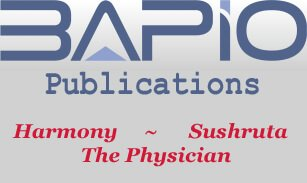FIRMST2020-AB03
DEVELOPMENT OF A NEW METHOD OF AORTIC VALVE DECELLULARIZATION USING THE SUPERCRITICAL EXTRACTION TECHNOLOGY
FIRMST2020-AB03
DEVELOPMENT OF A NEW METHOD OF AORTIC VALVE DECELLULARIZATION USING THE SUPERCRITICAL EXTRACTION TECHNOLOGY
Byron Simbarashe KAPOMBA1
1 Sechenov University, Moscow, Russian Federation
Aim:
One of the most promising techniques for tissue and organ regeneration is decellularization,
Keywords: Decellularization, aortic root, supercritical carbon dioxide
correspondence byronkaps@gmail.comconflict of interest -The need to reduce limitations of currently used aortic valve replacements.
Article InformationDOI:
10.38192/1.6.3.firmst20.ab03Epub: 20.09.2020Presented at FIRMST Conference, Moscow 2020Peer reviewed by JS Bamrah, Ananthakrishnan Raghuraman, Soumit DasguptaOpen Access- Creative Commons Licence CC-BY-ND-4.0
Background:
Valve replacement remains the last therapeutic option for patients with severe aortic valve dysfunction unsuitable for valvular reconstruction. The tissue-engineered heart valve portends a new era in the field of valve replacement.
One of the most promising techniques for tissue and organ regeneration is decellularization, in which extracellular matrix is isolated from its native cells and genetic material in order to produce a natural scaffold.
Decellularized heart valves are of great interest as a scaffold for the tissue-engineered heart valve due to their naturally bioactive composition. One of the disadvantages of currently used decellularization protocols is long duration of the process (14 days).
The object of the study was an ovine aortic root (56).
The effectiveness of decellularization was evaluated by DNA quantification. Mechanical tests were carried out at EZ Test facility. Statistical processing of data was carried out by standard methods. Differences were considered significant at p<0.05.
In contrast to the classical processing of detergents in a solution, the developed protocol made it possible to completely eliminate nuclear material. The level of residual DNA decreased from 5.14 ± 0.01% ref. after classical treatment up to 2.70 ± 0.22% ref. after extraction in scCO2 medium. The hybrid treatment with detergent solutions for 24 hours and the subsequent extraction in scCO2 medium for 3 hours (t = 37 C, P = 15-25 MPa) made it possible to extract cells whilst maintaining the extracellular matrix structure.
Thus, the combined treatment (detergent + scCO2) makes it possible to obtain cell-free intact matrices.
If you are interested in publishing your conference abstracts with us
If you are interested in publishing your conference abstracts with us
Please contac the editorial board for peer review and publication in the The Physician Journal of International Health



